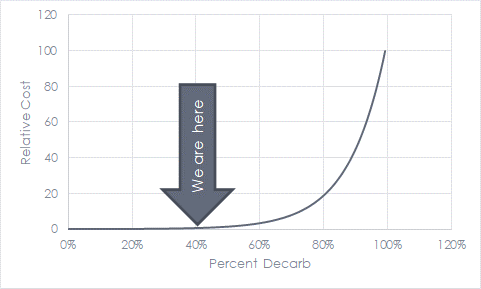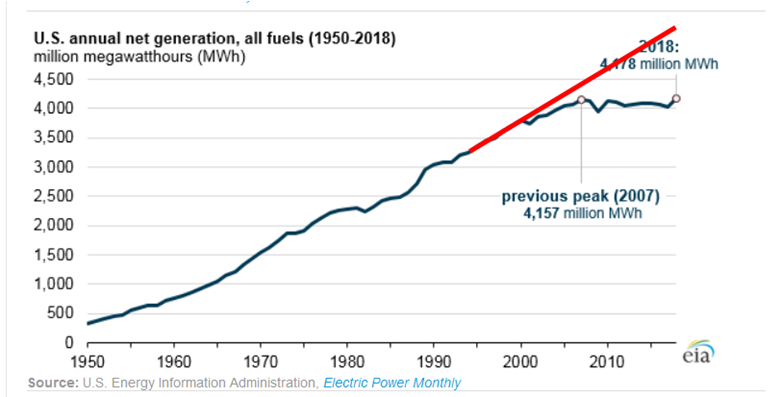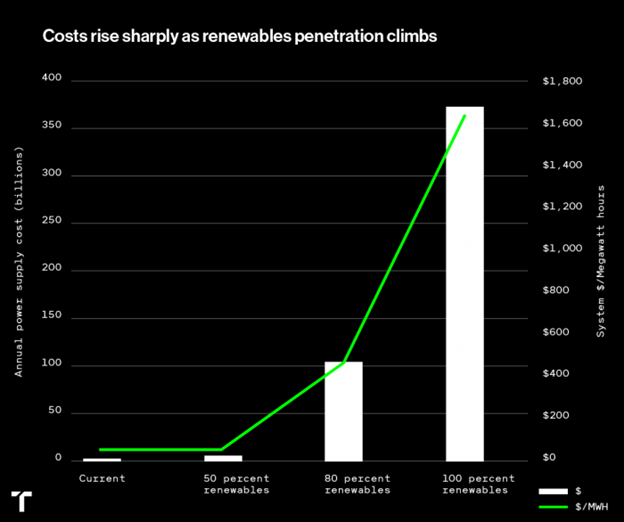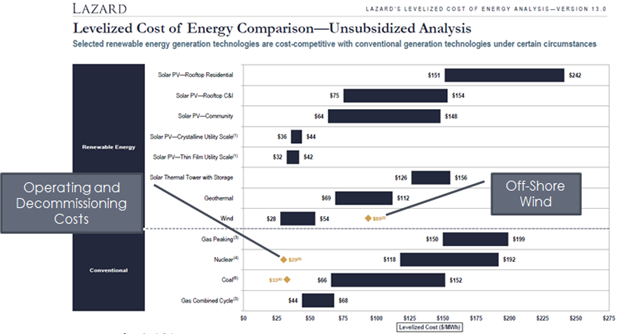
“Can I ask a question?” My response to that, in good company, is, “You just did. Would you like another chance?” Now that, my friends, is a paradox.
As you ought to know, I’m preparing a mind-blowing three-hour course on decarbonization for AESP’s Spring Training. One conclusion: 100% decarb is going to take decades and it will be expensive and disruptive. A lot of progress has been made, but it has been easy for reasons I will explain next following this chart, which shows how decarb cost will soar as the percent reduction increases. Average CO2 emissions per kWh produced in the United States have decreased from 1.45 lbmCO2/kWh to 0.89 lbmCO2/kWh, about 40%, in the last 25 years.
 This chart is similar to the following one from MIT, which I referenced three years ago. They also say we are on the mostly flat part of the price curve.
This chart is similar to the following one from MIT, which I referenced three years ago. They also say we are on the mostly flat part of the price curve.
Source: TechnologyReview.Com
Getting to 40%
I have one theory and one fact for how we achieved a 40% reduction in carbon with ease. Of course, you likely know the fact, which is the price of natural gas has plummeted in the last decade, but that mainly affects the Eastern half of the population where Appalachian Coal was the primary fuel. Appalachian coal is much more expensive, albeit a little more energy-dense than surface-mined Wyoming Powder River coal, which is used in the middle of the country.
My theory is that planners 20-30 years ago expected typical load growth of 5-7% per year, and of course, that did not happen per the chart below. The red line is the projected load growth. It cost $20 to generate by me at my hourly rate. You could spend $100 million on that with dozens of man-years of research and analysis, but I am here to tell you, overpowering forces bend the results to conform with recent history and trends. So rather than $100 million in wasted money, just draw a straight line, and declare victory. It is as good as anything. By the way, it’s the same thing for EE potential studies, but maybe with a non-routine-event adjustment for the disappearance of lighting from portfolios going forward.

My theory is we are, or were, way overbuilt with power-generating capacity. Dozens, if not hundreds, of fully depreciated power plants are not needed and they are being shut down. Vast forests of wind turbines have been installed with “investment” that may have otherwise gone to replace those closed thermal power plants and add more! Ok? We have plenty of dispatchable, reliable, thermal power generators remaining to pick up for the valleys left by wind turbines. This is the second easy and massive carbon-reduction mechanism that got us to 40%.
A One-Time Trick
Going forward, the dispatchable resources will age and need to be replaced. Nearly the entire nuclear fleet is beyond its expected useful life. By the way, do you realize that the long-maligned nuclear sector has doubled its operating licensures from 30 to 60 years? Is that factored into the levelized cost of electricity generation?
So, energy efficiency and demand management struggle to be cost-effective because of the rearview mirror. If we are decarbonizing, that’s not where we’re going, so why is the analysis as such? You’re welcome.
Policymakers, utilities, commissions, you, me, and the man behind the tree need to look at where we are going to determine avoided cost. See the first chart, along with my theory, which happens to be correct. The piper is going to be paid in the next couple of decades JUST to hold our position, let alone keep advancing up the decarb curve.
 The Right Price of Electricity
The Right Price of Electricity
The cost to generate electricity is irrelevant if it’s not available. Value, not cost, matters. As a cost-effective decarb resource, wind is a poor choice. For every MW of wind generation, you probably need 0.8 MW, at least, of dispatchable storage, generation, or hundreds of miles of transmission lines to connect loads to where the wind is blowing. Storage is never going to compensate for the long valleys left by wind generation, which can last for days, especially when wind blows the least and current loads are near their peaks – August. For future complications and winter peaking, see Dominos Fall in Texas. We would be facing hundreds of miles of high voltage transmission systems at $1.5-$3.0 million per mile. There is your avoided cost of efficiency and demand management folks. What are you talking about – fuel is free, avoided costs are nothing? Total bunk!
It reminds me of what I wrote last week. Ah, it’s 30 years out there. Something magical will come along and make it happen – inexpensive, reliable, clean. Not so if we don’t get serious about the demand side TODAY. The supply-side design, including nuclear and preferably diversity, carbon capture for base loads needs to start TODAY.
I’m not giving away the rest of the farm. The farm can be purchased for $300 for AESP members or $450 for non-members here.







